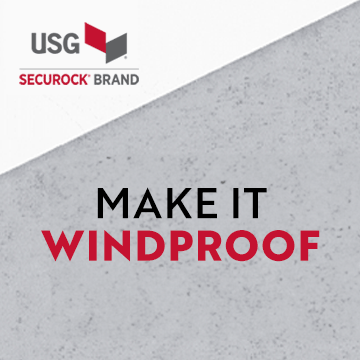Conceptually
« Back To Roofers Talk"Hydrotech" seems like a distant rubberized modern cousin of mastic asphalt. http://www.hydrotechusa.com/video.htm
I think Eric is right about polyurea being the best.
This is a TOTALLY biased response, though. B)
Eric,
What type of project situation are you considering using the 6125 application on. As you know there are pros and cons to every system and there is not one product that is suitable for every situation. If you want to get into a more detailed discussion, feel free to give me a call. I will be happy to talk to you share some of my experiences with the system.
Some time ago I got a response from Tom about the sprayed rubber products. What he said, without mentioning any names in particular, was that there are a lot of products out there that have great dry sample characteristics but that adhesion was a common problem. ( I had broadcast a question about a particular neoprene product and he responded in general terms.) That product was used shortly thereafter by others on a project I did some extensive metal work on. Among other things, they were sticking it to some of that metal so I took great pains to leave all the metal surfaces in pristine condition. So far the owners haven't reported any problems, but I know for a fact that the adhesion was not complete and pointed it out to the job foreman and g.c. Over the years now, I have acquired the belief that polyurea would be the best sprayed membrane for nearly any application if immediate cost were not the trump suit.
I finally got a look at my first SEBS membrane after hearing about it for some time. It was put down on plywood in a long, narrow well with a series of bolts sticking out of the sides to receive solar panels. The consultant described it pretty much as Bob did, with what he called a polyester (scrim is the word he used, rightly or wrongly) layer sandwiched in and it had a cover board on it. Looked almost like it had been mopped but I see now that it may have been troweled. Still kind of tacky several days later. Someone on site said it can't stand up to any UV and they were going to come back and gravel it in somehow. It seemed pretty stable on the walls, though tacky. They called it Hydrotech and said it was for dead flat applications. (The floor is dead flat) I'm scratching my head and don't know why. Something just doesn't quite feel right to me. Why would it be a good idea to choose this kind of hot membrane over any number of other options. It can't be cheap. Is it truly better?
VAA,
The products you are referring to are spray applied (unreinnforced) coating products and they do not remotely compare to the elasomeric SEBS products that EGG was asking about. SEBS products like Hydrotech 6125 are heated in oil-jacketed kettles that have adjitating paddles that continually mix the product durng heating. The system includes a polyester reinforcement mat applied broomed in place while the product is still somewhat viscous and is then topcoated again with a protection mat such as a G2 fiberglass base sheet. Overburden and drainage components are then placed over the completed waterproofing system.
Anytime a concrete slab is waterproofed with anything, the surface has to be properly prepared to ensure proper adhesion. This includes a surface that is sandblasted clean,free of contaminents, dry and lightly primed (primer also has to be thoroughly dry) prior to applying the waterproofing. Over-priming can cause problems and can compromise adhesion. I have seen a dry concrete surface observed in the morning, turn to having unacceptable moisture levels appear as the sun draws moisture out of the slab from the bottom up. The standard moisture test as recommended by the manufacturers would be to pour the properly heated product onto the surface and if it remains smooth with no pinholes or bubbles, the surface was dry enough for waterproofing application. If it bubbled like pancake batter on a griddle, too much moisture was present.
No time tonight, Bob, but I have some questions you are probably just the man to answer if you are willing and I promise they don't involve the use of cant strips j/k
Eric,
Dating back to 1988, I have had a fair amount of hands-on experience with SEBS -rubberized asphalt systems. I have specified and done QA/QC monitoring on subgrade waterproofing as well as plaza deck projects. Is there something specifically that I can help you with?





















